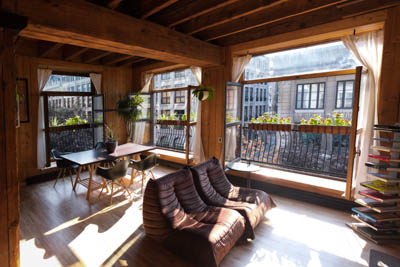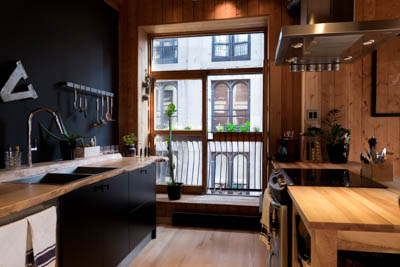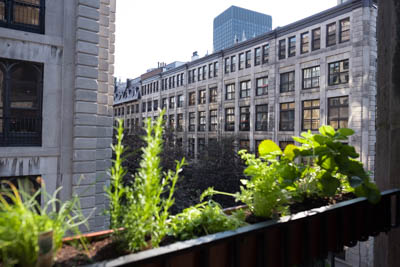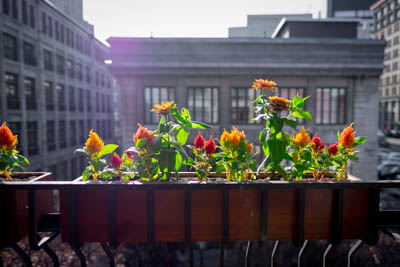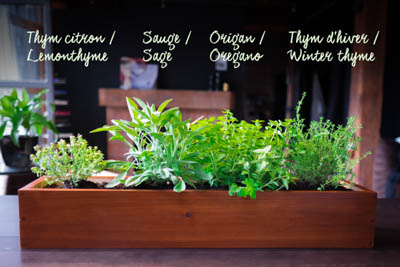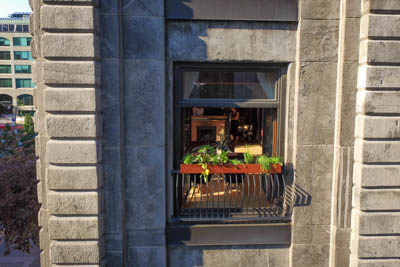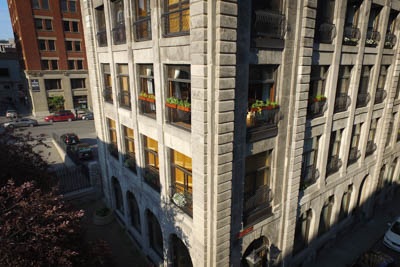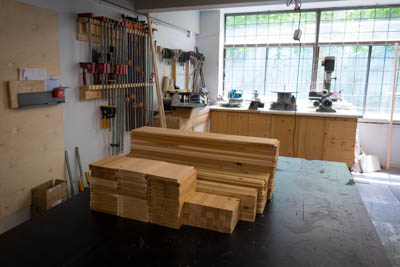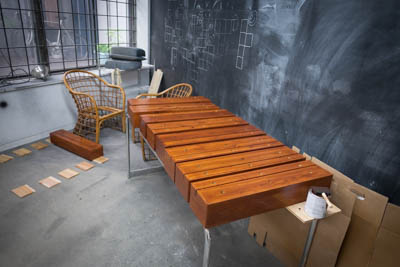

Custom wooden planters for LeRoyer, an Old Montreal building
A friend lives in the Old Montreal and the last time I went to his place, he showed me his window railings, saying he couldn’t find a planter that would fit on them. It didn’t take me much more than that to get me thinking.
It is a beautiful building on Saint-Dizier Street and I was surprised that few people have flowers or plants on their windows. Some people hang plants on the inside of the railings, others have boxes sitting between the railing and the window. Only one or two appartment seems to use regular planters even though they don't fit.
The railings come with a 4”1/2 wide tray on which a planter could fit. It would be a nice feature if a) it wasn’t that hard (read almost impossible) to find a fitting box that is nice looking and b) it didn’t make for a way too small box for most plants to survive the entire season.
For plants to stay healthy and happy, they need some room to grow roots. Also planters get hot in the sun and the soil dries quickly; the smaller the planter, the worst it gets. If you don’t want to spend too much time watering your plants, it is better to get a bigger planter. And 4”1/2 is definitely on the small side.
The challenge was to make a box that is about 7” wide and accommodates for the L rail. After spending some time on the drawing board and building 3 different prototypes, I settled on a rectangular box with a rabbet that goes all along the planter. It is always pleasant to turn a weakness into a strength. The rail that was preventing us from having a wider box will provide the support we need for the planter without any extra hardware. Installing the planter is as simple as dropping it in place.


The box is 32" long, 7" wide and 5" deep. It is made out of 3/4" inch thick Red Cedar and finished with a natural oil finish from the Canadian company Livos. The wood comes from North America and the planter is handmade in my shop in Montreal, QC. While most wood planters on the market only use nails or screws, these planters are carefully put together with a strong rabbet joint and dowels. Dowels provide the strength that screws or nails usually add without the fear that they will rust over time. The glue I use is the Titebond III, which is one of the rare glue that is waterproof and food-grade.
